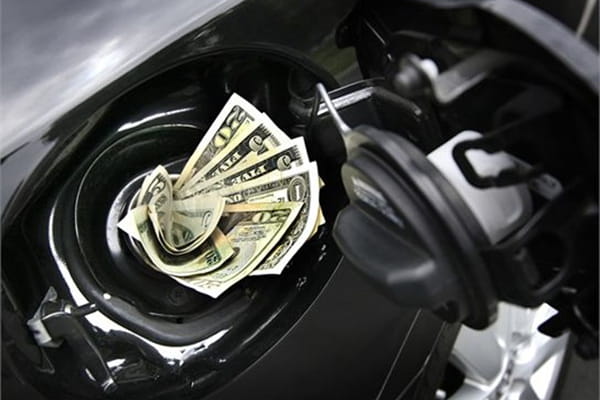Q&A with Shawkat Hammoudeh: The Early Surge in Gas Prices

Much to the dismay of American drivers, the price of gasoline started an upward climb earlier than usual this year. Though gas prices rise each year as spring turns to summer, this year saw the increases start in mid-January, with costs going up for 32 straight days at one point.
With drivers feeling pain at the pump, DrexelNow spoke with Dr. Shawkat Hammoudeh, a professor of economics and international business for the LeBow College of Business who specializes in oil and commodities and financial economies, who shed some light on the various causes of this year's earlier-than-usual price increases.
Gasoline prices typically climb from February to Memorial Day on expectations of rising consumption and costlier summer-blend gas. Why are they surging sooner and faster this year?
Sixty percent of the cost of gasoline relates to the price of crude oil, while the other 40 percent has to do with the gasoline market itself. This early surge in the price of gasoline has to do more with the 40 percent than the 60 percent. This case is now called the refinery factor. There are 149 refineries in the United States yielding a total refinery capacity of 16.4 million barrels a day. The current demand for refined products demonstrates that the number of refineries and total-refinery capacity are not enough as they do not include a cushion to guard against price jumps during unfavorable conditions. The oil companies have participated in creating the gasoline shortages. The elimination of dozens of refineries since 1995 due to low margins and shrinking demand, and the dearth of new refineries have the market sensitive to marginal causes. For example, the news of the closure of the St. Croix Hovensa refinery on the East Coast next month has had a ripple effect that has been felt as far as the midcontinent refineries, which still have the “ocean view” of all U.S. refineries in terms of margins because of processing the trapped cheap West Texas Intermediate, or WTI, oil, compared to the ones that process the better Brent oil.
Recent natural events have also damaged some refineries and caused erosions in the pipelines. The refinery problems in California caused shortages and long lines, particularly in Southern California, and spilled over to neighboring states. There is also a refinery problem on the East Coast, which has an average price higher than the national average. The natural events have damaged refineries and caused erosions in the pipelines. In Southern California, some gas stations refused to buy the more expensive, cleaner summer gasoline and were willing to wait in case the price would drop—this will make them lose money. In Northern California, there was a shortage because of a fire in Virginia that supplies that region with gasoline.
But the straw that broke the gasoline camel’s back this winter is the heavy winter maintenance in many refineries, which reduced the throughputs of gasoline and other refined products, in addition to the transfer to the more expensive summer blends. These factors came on top of a lower-than-the-five-year-average gasoline inventories for this time of the year due to refinery closures and mechanical problems that happened in the wake of Hurricane Sandy.
How high can we expect gas prices to go before we see relief? Which states will see the highest increases?
The answer depends heavily on the refinery factor explained above. Some of the components that make up this factor should be resolved soon. That includes the end of scheduled winter maintenance and the repair of some refineries, which implies that the refinery throughputs will start to increase. The unscheduled maintenance and the deep repairs will take longer to do. But as indicated, some of these problems are being resolved over time. This means a small and temporary relief to the gasoline market is on the way. But this will not last long because the summer driving season is coming.
The current estimates for the national retail gasoline price for this summer ranges between $4 to $5 a gallon. But the price may not reach $5 because of adjustments of consumer behavior to oil prices, barring any major development in the Middle East, particularly in Syria. The American consumer was trained in 2007-08 on how to deal with higher gasoline prices and it can make use of that training this summer to make the adjustment. The price can easily go above $4 a gallon this summer. But there is a “perfect storm” that is currently affecting the American consumer. It is made up of a higher payroll tax, a looming sequester and higher gasoline prices. This storm should keep the gasoline price below $5 a gallon.
The states that will see the highest price increases include California and Hawaii. Those states have extraordinary problems with refineries. On February 19, the price of retail gasoline reached $5.15 a gallon in a gas station in downtown L.A. The closure of the St. Croix refinery is likely to make the Northeast, particularly in areas near Boston and New York, the “California of the East.” The St. Croix refinery is a large supplier of the more expensive and more difficult to produce summer-grade reformulated gasoline blend sold in New York harbor. In the refinery business, the price of gasoline is location, location, location.
How much of a role does political unrest in the oil-rich Middle East play in determining gas prices? Some reports say several refineries went out of business in the U.S. and this is contributing to the rise in gas prices. Is that true?
The price of crude oil makes up 60 percent of the price of gasoline. Therefore, the political unrest in the Middle East directly affects the 60 percent. The prices of oil and gasoline are also indirectly affected through the increases in the risk premium, which is one of the four components that make up the price of oil. The size of the risk premium is a factor that influences the speculators in terms of whether to act or not to act.
The elimination of refineries has made gasoline prices very vulnerable to marginal events. The East Coast has lost one million barrels a day of lost capacity, which has made it sensitive to unfavorable events such as hurricanes and refinery closures. The news about the imminent closure of the St. Croix refinery is the best example of the vulnerability of the Northeast to refinery closures or a better economy.
Any predictions in terms of what we can expect to see in the future in terms of the relationship between supply and demand for gas?
The era of cheap gasoline is gone for good. There is no return to the $2 gas even after the shale oil and natural gas revolution takes traction. The balance between supply and demand for gasoline should come from automobiles that will be powered by natural gas and batteries.
In This Article
Drexel News is produced by
University Marketing and Communications.
